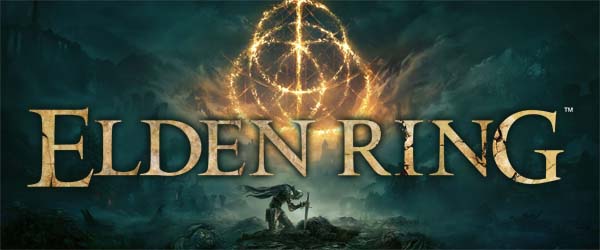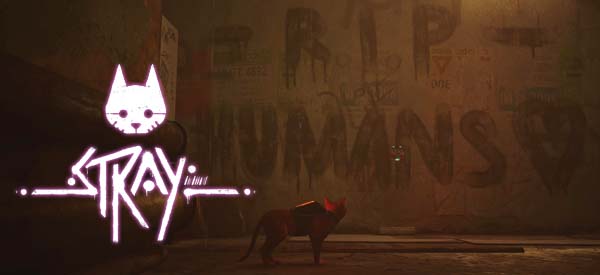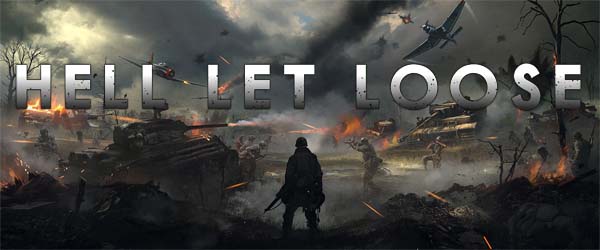
I always considered the first Dark Souls to be an "open world" game in all the ways that matter. The world is interconnected, coherent, and surprisingly functional. Almost every location in the game is walkable from almost any other location, and every distant landmark is an actual place that you can go, which usually has a big, scary monster waiting to show you the "YOU DIED" screen for the thousandth time.
As such, I didn't really expect that a transition to an actual open world would in Elden Ring would really make all that much difference -- either positive or negative. Dark Souls, Bloodborne, and Sekiro already felt open and exploratory despite being a series of linear corridor crawls cleverly interconnected into a tight helix. So I didn't expect Elden Ring to really feel all that much more open or exploratory. Further, all of From Software's games are also designed from the ground-up with a play-at-your-own pace paradigm of story delivery -- in that From's games are more about doling out "lore" in piecemeal rather than about a linear narrative with a clear-cut beginning, middle, and end. So I wasn't terribly worried that a transition to an open world structure would break any narrative flow or the sense of stakes for the character, as it does in so many other open world games.
From Soft's brand of player-driven lore discovery is well-suited to an open world format.
What I didn't expect though, is how the open world would dramatically improve both the accessibility and the challenge of the game.
Elevating the genre
Having transitioned to a more traditional open world design, Elden Ring does suffer from some of the same problems that plague the sub-genre. Assets, enemies, bosses, traps, and so forth are all re-used throughout the map, and many of the dungeons look like they were pulled straight out of Bloodborne's Chalice Dungeon generator. Each region of the map will assuredly have at least one mine tunnel full of upgrade stones. It will have at least one crypt dungeon (usually with a Burial Tree Watchdog boss that looks like a cat statue). It will have at least one set of ruins with a boss waiting in the basement. And they'll all have a minor Erdtree with an Erdtree Avatar (or similar) boss.
That being said, I haven't come across any of these dungeons that feels to me like it was just haphazardly thrown together. Each dungeon has its enemies, traps, and setpieces thoughtfully arranged to test various gameplay skills and the player's power of observation and thoroughness of exploration. Each one also has a unique piece of loot offered as a reward for defeating it -- usually a weapon, talisman, or spirit ash. Unlike, say, Skyrim, which just rewards all of its dungeons with disposable weapon or piece of armor that is level-scaled and arbitrarily magical, each dungeon in Elden Ring rewards a unique item that conveys a piece of lore. Early in the game, almost all of this loot is something that will be useful to most builds, which really helps to encourage the player to continue exploring these mini-dungeons. And later, even if the item isn't useful for a build, it might still reveal valuable lore.
Bosses are frequently re-used, but none of the dungeons feels haphazardly thrown together.
The sheer volume of places to go and things to do might seem overwhelming, but it's also a huge boon to new or struggling players. They have plenty of options for alternative challenges to try, which vary in difficulty. Getting stuck on the main quest path, or in a particularly nasty optional dungeon is easily alleviated by simply wandering off in another direction -- any other direction -- and trying something new that might be a bit easier to conquer, or which might provide loot that is useful in the places where you are struggling. Or you can just wander around the overworld and grind.
A lot of these dungeons can also start to feel tedious and unnecessary. I can go through entire dungeons, beat a boss, and still not have acquired enough runes to gain a single character level. On the one hand, this is frustrating, and some of these dungeons feel like a waste of time for a mid-to-high-level character. On the other hand, the increased desire to hold onto these runes means I'm more inclined to run away from a fight that I'm not equipped to handle, which forces me to engage more with that open world by trying to find another boss or another dungeon that is more my level, rather than continuously bash my head against the same boss wall over and over again.
If you get stuck on a boss, explore somewhere else.
Players are much more free to follow your own path through the game. In fact, From included plenty of opportunities for sequence-breaking for particularly inquisitive and observant players. Dungeons and bosses that seem like a mandatory bottleneck for progress can sometimes be skipped entirely. And honestly, it's not even all that hard to find these bypasses, since they are often out in plain view for anybody who bothers to deviate off the main path at all.
And this process of exploration really does provide a sense of genuine discovery in ways that most other open world games fail to deliver. The full scope of the map is hidden to the player at the start, so reaching the crest of a hill and finding an entire continent that wasn't on your map a moment ago is genuinely surprising and awe-inspiring. The fact that every notable point of interest is not immediately marked by climbing a tower or finding a checkpoint really facilitates a sense of exploration and adventure. It really feels like there's always going to be something new and interesting over every hill, around every corner, and within every dungeon.
[More]
When I booted up my PS5 for the first time and signed into the PSN, I immediately downloaded a few of the must-have games. You know, the Demon's Souls remake, Miles Morales, and Returnal. I also downloaded some other ... shall we say "less high profile" games that piqued my interest, including the [ultimately very impressive] World War II shooter Hell Let Loose and a little indie game that claimed to be a sequel to H.G. Wells' classic sci-fi novel The War of the World, called Darker Skies.
Darker Skies takes place during the aftermath of H.G. Wells' classic novel The War of the Worlds,
but the visual and sound design is clearly pulled from the 2004 Steven Spielberg movie starring Tom Cruise.
Budget "Last of Us"
I didn't have high hopes for this budget indie title, but I was curious what a game developer would even do with a property like War of the Worlds. As soon as I saw the first enemy, a zombie shambling around just like a Clicker from The Last of Us, my heart sank. With all the potential of the source material, Steel Arts had to go with a zombie game?! The War of the Worlds is a classic sci-fi novel about a Martian invasion of Earth. My expectation for a video game adaptation of The War of the Worlds would either be some kind of survival horror game about surviving against Martians who survived exposure to Earth's microbes, or an action shooter about humans counter-attacking the Martians on Mars, or something akin to XCOM. It absolutely would not be a total knock off of The Last of Us, right down to having infected zombie humans.
And when I say this is a knock off of The Last of Us, I'm not just talking about the presence of Clicker-like zombies. The protagonist has an X-Ray "focus" vision, he scavenges random supplies in order to craft consumables supplies, and most encounters with enemies are intended to be dealt with by various throwable tools. There's even areas of the map that are overgrown with red Martian tendrils, similar to the spore-infested areas of The Last of Us, except this time around, the character doesn't need a gas mask to get through.
The character can use X-ray vision to detect enemies through walls, but only if they are moving.
The only thing missing is the tag-along NPC child character -- which is a big problem because the interactions between the two characters is a huge part of what makes The Last of Us a great game. That's where the heart and soul of that game was. If you played The Last of Us, and you thought the best thing to emulate is the crafting system, then I feel like maybe you missed the point...
[More]
72490b38-a75a-4bb0-8c2c-627a390787ae|1|2.0
Tags:Darker Skies, Steel Arts Software, indie gaming, PS5, H.G. Wells, The War of the Worlds, science fiction, horror, survival, crafting, zombies, The Last of Us

When some of the trailers for Stray started releasing on the internet a couple months ago, a couple of my co-workers were really enthusiastic about it. I took one look at the trailer, and pretty much had the entire game figured out. But the idea of playing as a literal cat (as opposed to an anthropomorphized cartoon mascot cat) seemed novel enough for me to toss the game on my Steam wishlist. I ended up buying it on PS5 though, since the price was the same and my aging PCs might not be able to render all the pretty, ray-traced neon lights of the game's cyberpunk dystopia setting.
Right off the bat, I was surprised that Stray does not feature any kind of customization for the cat. I had a bit of a Mandela effect going on in which I could have sworn that the trailers I watched earlier in the year showed customization. But no, we're all stuck with the same orange tabby cat. At the very least, I feel like the developers could have given the player the option to play as one of several pre-fab cat models. The game begins with 4 cats in a little colony, and it seems like the developers could easily have given players the option of which of the 4 cats we want to play with. Ah well. Not a big deal.
I wish there were options to customize the cat or play as different pre-made cat skins.
After being separated from the other 3 cat buddies, the one playable cat must navigate a walled-in dystopian cyberpunk city to find its way back out to its colony. This is done by progressing through a linear route through the environments and completing collections of 3 various types of activities:
- Run away from hostile critters,
- Explore small sections of the city populated with humanoid robots for keys, collectibles, and lore,
- Do some light stealth.
Cyberpunk cat tower
The best parts of the game are easily the exploratory sections, as they are the most free-form and best utilize the novelty of the feline protagonist. The levels all have a significant vertical element to them, and the low-angle camera gives an impressive sense of scale. All the spaces are very small horizontally, never representing more than a single city block, but they are easily doubled or tripled in terms of traversable size when the vertical spaces are factored in. A simple, 3-story tenement building might as well be the Empire State Building from the perspective of your foot-tall feline avatar.
If the player isn't routinely looking up, climbing where you can, and squeezing into tight spaces, you'll likely miss a lot of the game's secrets and collectibles. Though if you are testing the verticality of all the spaces, you should find most (if not all) collectibles without much extra effort or thought.
A stray cat must navigate a cyberpunk city inhabited by robots.
This gameplay would probably be a lot more impressive if not for the fact that it isn't doing anything that every other open world adventure game since Assassin's Creed has been doing: climbing and rooftop parkour. Even though the levels are 3-dimensional, paths to the heights are usually clearly signposted and railoaded, and the cat can only jump or climb onto places that specifically have "jump to" prompts. There are no leaps of faith for this cat. All the challenge is simply observational: is there a clearly-visible path to the place I want to go?
[More]

Hell Let Loose is one of the most un-welcoming games for new players that I have ever played -- at least in the modern era of video games since in-game tutorials became common place in the early 2000's. There is no tutorial or practice mode of any kind. For a standard, run-of-the-mill online shooter, that might not be a huge problem. But Hell Let Loose is not your standard, run-of-the-mill online shooter. It's a slower-paced online shooter based heavily around squad tactics, in which death comes quickly from out of nowhere -- especially for players who get isolated from the support of their squad. It requires much greater communication and coordination from players, and it has a complicated role system in which each character class has very specific duties on the field, all of which are required for an army to be successful.
There are various roles, all of which are necessary for victory.
As such, the complete inability to ever be able to learn those roles and how they work is a huge problem! There is a "Field Manual", which explains, in text, the basics of the game and each role. But it's an information overload, and a new player can't really be expected to absorb it all.
There is no tutorial or boot camp,
like in other similar games.
Straight to the front
The developers, Black Matter Party, is a small team, and I know that creating a guided, playable tutorial to explain such a complicated game would not be easy and would require a lot of budget and person-hours to create. Being an exclusively online, multiplayer shooter with no single-player campaign, means that creating A.I. bots for practice is well beyond the scope of the game. But if I could just practice by myself, and be able to freely switch to any role at any time, it would go a long way towards helping to learn the game.
At the very least, the ability to drop myself into an empty offline arena n order to run around, practice each weapon, practice the equipment of each role, and learn the map itself, would be very helpful. That shouldn't be too hard, since a basic offline sandbox mode doesn't require any additional assets, scripting, or A.I. programming. It also probably wouldn't be too hard to drop in some target practice dummies scattered around the arena for me to shoot at, and maybe also some friendly dummies for a medic to practice reviving. I don't see any reason why that wouldn't be doable, even for a small team.
The unfriendliness towards new players likely scares a lot of people away from this game, and its reputation as being un-welcoming to n00bs probably limits the number of players who are willing to even give it a chance, despite the fact that it seems to have garnered mostly favorable critical reviews. This creates a cyclical problem. The low player count means there aren't enough active players to support and maintain beginner servers. Heck, this game is lucky to have more than 2 matches open at any given time. Matches are, thus, dominated by skilled, experienced players, who are able to spot and snipe the less-experienced players from a mile away, before the poor victim has any clue what is going on, or that he or she is even in danger. This makes the game even harder, further pushing away new players, keeping the player-counts small, and further widening the gap between the few dedicated players and the scrubs like me.
Much of my play experience consists of running across fields or forests, and then promptly dying.
Most of my play experience in the first few weeks of play consisted of me running across a field, or through a forest, or into a village, only to be instantly killed by an off-screen opponent. Or if that opponent is on-screen, it's probably just 2 gray pixels off in the gray distance. There's no kill-cam or anything either, so I have no idea who killed me, or where they were. I have no idea what weapon they were using, or whether I was even killed by gunfire or by a grenade Or maybe I stepped on a landmine, or was hit by artillery bombardment or a mortar, or was strafed by a fighter plane. Are those things even in the game? I don't know -- or at least, I didn't know during those early play sessions. If I do get shot, I have no idea what gun my killer was using, whether he was standing, squatting, or prone. Was he was behind cover? Was he was looking down the sights or shooting from the hip? I don't know anything about what killed me.
[More]
fbeb5484-c132-406e-96e2-0417bd434391|0|.0
Tags:Hell Let Loose, Black Matter Pty, Team 17, PS5, first person shooter, history, World War II, squad, online, multiplayer, Germany, United States, Soviet Union, officer, rifleman, support, medic, sniper, spotter, tank, anti-tank, suppression fire, tutorial, cross-play

I could've played Miles Morales on the PS4 back when it was released in November of 2020, but I really wanted to wait until I got a PS5. So I waited. And waited. Eventually, my number on Sony's waiting list came up, and I got a PS5 just in time for Christmas. Miles Morales, Demon's Souls, and Returnal were the first games I bought for it.
Early set pieces put a large emphasis on protecting civilians and reducing collateral damage.
If you liked Marvel's Spider-Man for the PS4 -- and who didn't? It was great! -- then Miles Morales is largely more of the same, but with the distinct urban flavor that comes with the Miles Morales story, and a story about corporations using "not in my backyard" politics to exploit under-privileged communities. Combat is virtually unchanged, aside from a few new gadgets and powers, and the locomotion is even more identical. So pretty much everything positive that I had to say about that game also applies to this game, and I'll try to keep this review short by not retreading the same praise and critiques.
There is a greater emphasis early in the game on trying to protect civilians. This is a welcome change, and I wish Miles Morales would have gone a bit further with it. Protecting civilians is a large component of early setpieces, but it is largely dropped once the story gets started proper. It's a shame that this isn't carried through into the rest of the game, since a major theme of the story is Miles serving as a protector for the under-privileged, mostly ethnic minority, population of Harlem.
Spider-Man has always been a hero for the common folk,
but this Spider-Man is also a hero for the under-privileged and down-trodden.
Christmas vacation
The campaign itself is also considerably shorter than the first game, taking place entirely during the Christmas season. I have mixed feelings about that. On the one hand, it's nice to have a more focused, 20 or 30 hour campaign. I have other shit to do, and it's nice to be able to finish a game's story without feeling like I have to play it every waking moment of my free time for weeks or months on end. And that 20-30 hours isn't just the story; I actually completed 100% of the side activities in that time as well.
On the other hand, playing as a younger Spider-Man just learning the tricks of the trade would seem like it would be well-suited to a longer, multi-faceted campaign with a series of escalating challenges and threats. It would have been nice to see Miles start out by focusing more on fighting petty crime in the Harlem area and adjacent districts, before moving onto more widespread organized crime, and then finally the super villain threats. There's no such escalation in Miles Morales' story. It jumps straight into the big super villain story and relegates all the "friendly neighborhood" stuff to simple side quests.
Insomniac wastes no time getting to the supervillain plot.
This does also mean that it gets its super villain surprise twist out of the way early, since it's a twist that is almost as obvious as the appearance of Doctor Octopus in the previous game. On the topic of the super villain "twist", I did find it annoying that a large part of the conflict depends on the Tinkerer making such a big deal about Miles' perceived dishonesty, but the Tinkerer wasn't exactly forthcoming either. Yet Miles never points this out.
Considering how polished Marvel's Spider-Man felt, despite also having a much bigger story and more side content, I was surprised to find a number of side quests in Miles Morales that were broken. This was doubly-surprising considering that I'm playing the game well over a year after its release. That's plenty of time for Insomniac to have fixed these bugs, even if they only have a handful of people doing maintenance on the game, while the rest of the team works on Marvel's Spider-Man 2 and Marvel's Wolverine. Even more concerning is that the specific side quests that broke for me were all related to the F.E.A.S.T. storyline, which is the most narratively and thematically important line of side quests in the game. I would think these would be the most stable and polished side quests in the game.
[More]
556903ac-0173-4a4a-90af-ae55457a53ff|0|.0
Tags:Spider-Man, Miles Morales, Marvel's Spider-Man: Miles Morales, Insomniac Games, Sony, PS5, Marvel Comics, Peter Parker, open world, New York, web-swinging, civilian, venom, Tom Holland, Dual Sense controller, adaptive trigger
|

| 12 | | | | | | | 60 | | 11 | | | | | | | 55 | | 10 | | | | | | | 50 | | 09 | | | | | | | 45 | | 08 | | | | | | | 40 | | 07 | | | | | | | 35 | | 06 | | | | | | | 30 | | 05 | | | | | | | 25 | | 04 | | | | | | | 20 | | 03 | | | | | | | 15 | | 02 | | | | | | | 10 | | 01 | | | | | | | 05 |
|